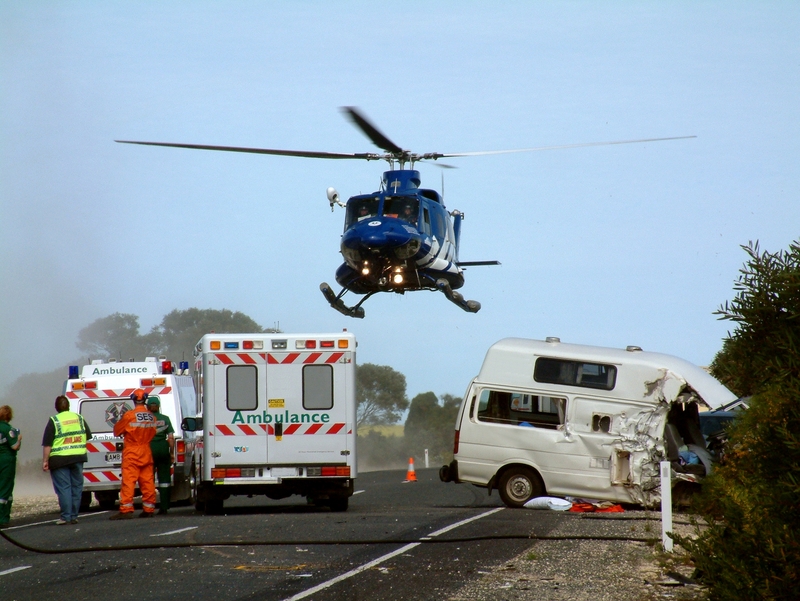Understanding right-of-way laws in California is extremely important for drivers and cyclists alike. It’s why many people often ask the question, do bicycles have the right of way in California? The answer to this question often depends on where the cyclist is riding and how traffic laws apply in that situation. That’s why if you have been in a bicycle-related crash, Sacramento bicycle accident attorneys can clear up any confusion you have on what to do next.
When Do Bicycles Have the Right of Way?
Many people are surprised to learn that bicycles don’t automatically have the right of way in every situation. In fact, they are required to follow the same basic right-of-way rules that are expected of those driving motor vehicles.
This includes:
- Obeying stop signs and traffic signals. All cyclists are required to stop at red lights and stop signs just like those driving cars. They are not allowed to ride through a yellow right unless they can safely clear the intersection before it turns red.
- Yielding to pedestrians. Cyclists must yield to pedestrians in a marked or unmarked crosswalk.
- Following proper lane positioning. When making turns or traveling through intersections, cyclists must follow the appropriate lanes and yield to any oncoming traffic.
Failing to follow these basic rules could result in the cyclist being found at fault for causing the accident. This could put them in a vulnerable financial position to pay for any damages the other party is able to quantify.
What Is a Bicycle Path Crossing?
California recognizes designated areas known as bicycle path crossings. These give cyclists in the area a clearly marked space to cross roadways.
This is according to California Vehicle Code 231.6, which makes clear:
- A bicycle path crossing is where a bike path intersects at a roadway or near a right angle.
- These crossings are marked with painted lines or signage, indicating that the area is meant for bikes to cross.
- Drivers approaching these crossings are expected to yield to cyclists when using the marked paths. This is similar to how they would yield to pedestrians at a crosswalk.
It’s important to make clear that cyclists must still enter these crossings safely and yield when necessary.
Do Cyclists Have the Same Rights as Drivers?
Yes, when riding on roadways or designated bikeways, cyclists are legally considered drivers of a “vehicle” under California law.
- Section 20001 of the California Vehicle Code ensures that all cyclists on Class I bikeways are entitled to the same rights as those operating motor vehicles.
- These rights include legal protections in the event of a crash, the right to occupy a lane when appropriate, and the obligation to stay at the scene of an accident if involved.
- Cyclists must also use turn signals, ride in the correct direction, and avoid riding under the influence of drugs or alcohol.
The justification behind this equal treatment is designed to promote safety and predictability on the road for everyone.
How Drivers and Cyclists Can Share the Road Safely
Both drivers and cyclists have their own important roles in preventing accidents and keeping everyone they share the road with safe.
Some key tips to keep in mind for drivers include:
- Always check your blind spots and mirrors before turning or opening your door.
- Yield to cyclists in bike lanes or at intersections when required.
- Leave at least three feet of space between you and a bike when passing a cyclist.
Cyclists must keep in mind the following:
- Use lights and reflective gear when riding at night or in low-visibility conditions.
- Stay as predictable as you can. Use signals to turn and avoid weaving through traffic.
- Ride defensively and assume that drivers may not always be able to see you.
FAQs
Q: Are Bicycles Considered Vehicles in the State of California?
A: Yes, under California law, bicycles are treated very similarly to motor vehicles when it comes to the rules of the road and responsibilities. This means that those riding bikes must follow all traffic signs, signals, and general right-of-way laws. It also puts them in a position to be cited for traffic violations, just like a typical driver would be. However, some vehicle-specific rules may not apply, which is why it’s important to clarify legal questions with your attorney.
Q: Can Bicycles Lane Split in California?
A: No, lane splitting is not permitted for bikes in California. Cyclists are required to ride as close to the right-hand curb or edge of the roadway as they can. The exception to this is if they need to make a left turn, are trying to avoid hazards, or are trying to pass a slower vehicle. Weaving between lanes of moving traffic is generally considered unsafe and could result in being issued a citation or ticket for violating traffic law.
Q: Are Cyclists Allowed to Ride on Sidewalks in California?
A: Whether or not a cyclist is able to ride on a sidewalk in California depends on the specific city or county in question. California doesn’t have a statewide rule that bans bikes from being used on sidewalks. There are some cities that permit this, while others prohibit it. Areas where it is prohibited are generally due to heavy pedestrian traffic, like in a business district, where it would become challenging to share the space.
Q: Who Has the Right of Way at an Unmarked Intersection?
A: General right-of-way rules apply when a vehicle and a cyclist arrive at an unmarked intersection. This means that whoever arrives first will typically have the right of way. If both arrive at the same time, the vehicle on the right typically goes first. Cyclists are expected to yield just as cars do and wait their turn to avoid confusion on the road and prevent an unnecessary collision from happening.
Contact Guenard & Bozarth, LLP Today
If you have recently been involved in an accident in California between a vehicle and a bike, contact our firm today. Guenard & Bozarth, LLP, has a strong understanding of traffic laws across the state and can take a deeper look into your case to see what options you have to pursue compensation for any damages you have suffered as a result.

